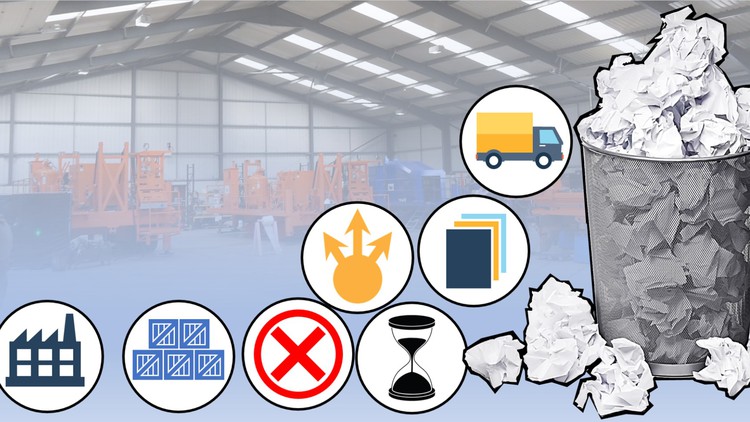
Learn practically from Industry experts how to eliminate Eight Types of Lean Process Waste Management in an organization
What you will learn
Learn Fundamental Lean Concepts of Muda, Mura and Muri
Focus on all 7 Wastes of Lean in details
Practical examples of how to identify the waste in manufacturing organization
Learn the difference between pure and incidental waste
Description
The Eight Wastes of Lean
Originally there were seven wastes identified by Taiichi Ohno for the Toyota Production System. As lean evolved into the rest of the enterprise and around the world, an eighth waste, non-utilized talent, was identified. Use an acronym, “DOWNTIME”, to help remember the wastes. This course The Certified Lean Expert on Eight Process Waste (CLEPW) course covers the key ways to identify and control in your workplace.
DOWNTIME stands for Defect, Overproduction, Waiting, Non-Utilized Talent, Transportation, Inventory, Motion, and Extra Processing.
D – Defects – Effort required as a result of rework, scrap, and incorrect information or data
- Part fails due to poor supplier quality
- Part fails dimensional inspection due to machining error
- The same fault on a machine occurring twice
- Incorrect engineering drawing
- Assembly instructions not updated
O – Overproduction – Producing more than required or producing it too soon
- Manufacturing widgets to fill the warehouse with no orders
- Extra approvals
- Redundant quality checks
- Producing product early to recognize financials
W – Waiting – Wasted time waiting for the next step in the process to take place
- Standing at a machine that has a “warm-up” time
- Waiting for an engineering decision before moving forward
- Waiting for an email response
N – Non-Utilized Talent
- Leveraging a known skill within a team member
- Individuals that perform robotic movements i.e. (data movement or assemblers)
- Spending time waiting while another task could be completed
T – Transportation – Unnecessary movement of material, data, and parts
- Moving parts from one workstation to another
- Scanning a PDF and emailing it to someone
- Relocating material to make space for other material
I – Inventory
- Purchasing just in case parts
- Inventory not moving
- Work in progress
- Unread emails
M – Motion
- Walking from your desk to the conference room for an “update”
- Mouse clicks that are unnecessary
- Walking to a tool crib to pick up a tool and then walk back
- Walking around the shop to build a kit for a preventative maintenance task
E – Extra Processing – Doing more work or higher quality work than your customer requires
- More than required QC inspections
- Scanning a PDF and emailing it to someone
- Manually entering data into an ERP
- Making paper part of the process
Lean is a targeted approach to eliminating waste and elevating your team’s capacity to innovate. The more time people have to focus on the real problem, the more engaged they become.
This course mainly designed by IIEEL through research and it focuses on making students understand the fundamentals of all Lean Waste and Lean Work
Content